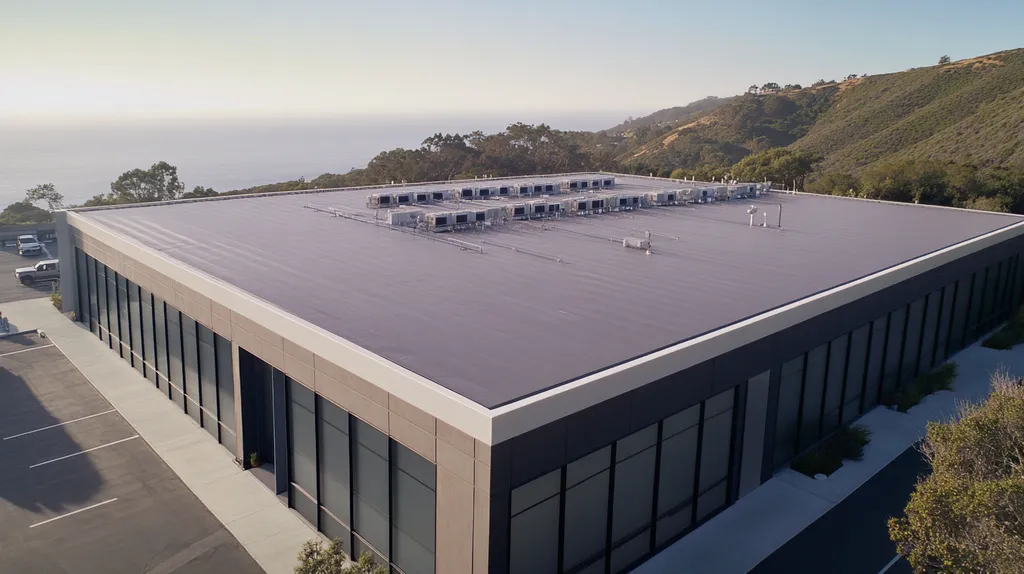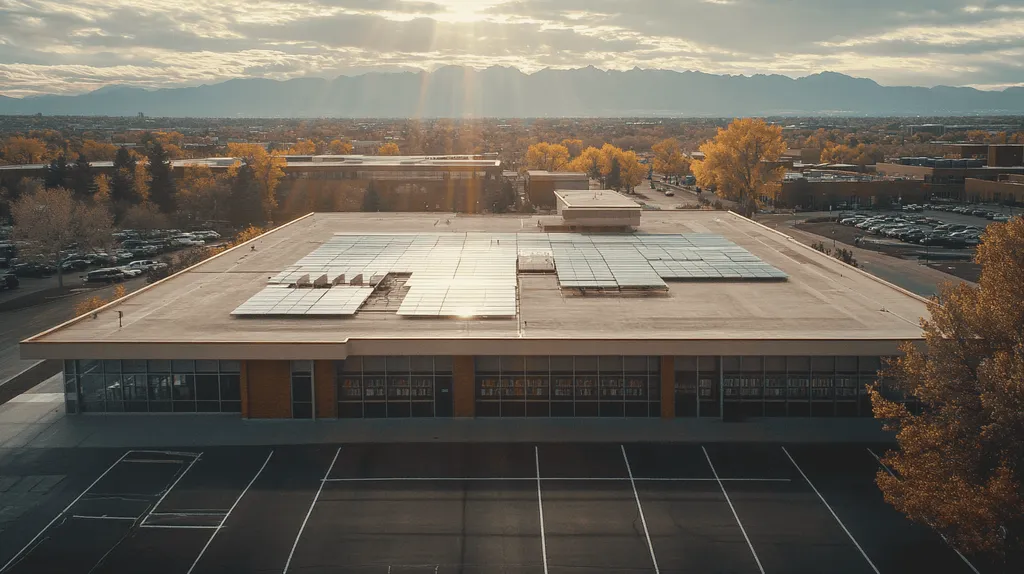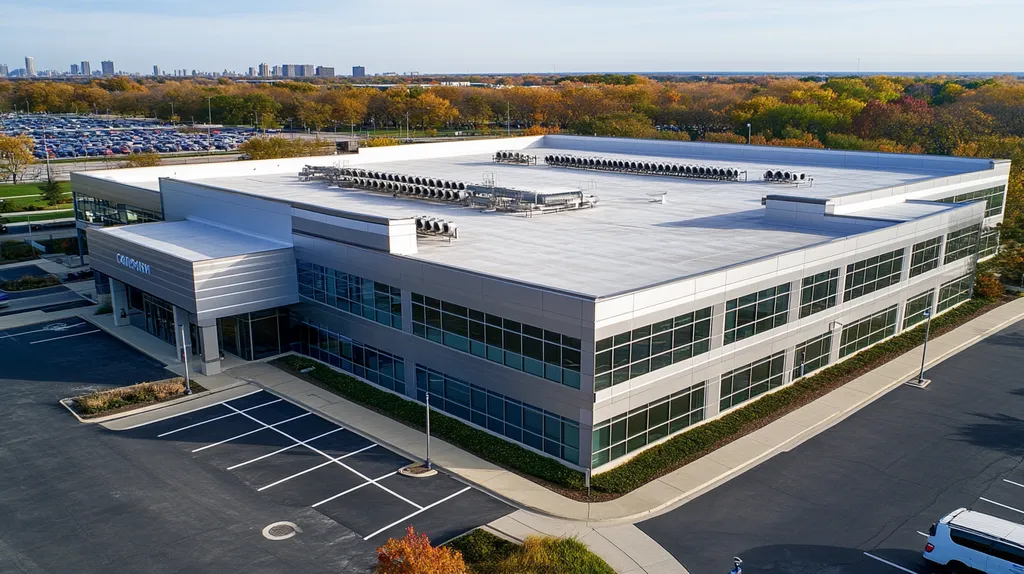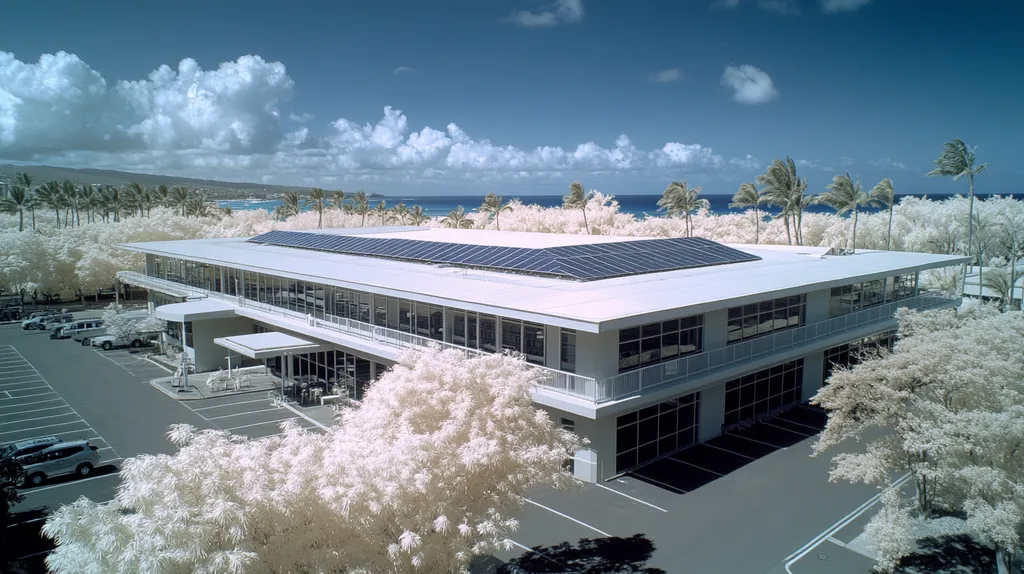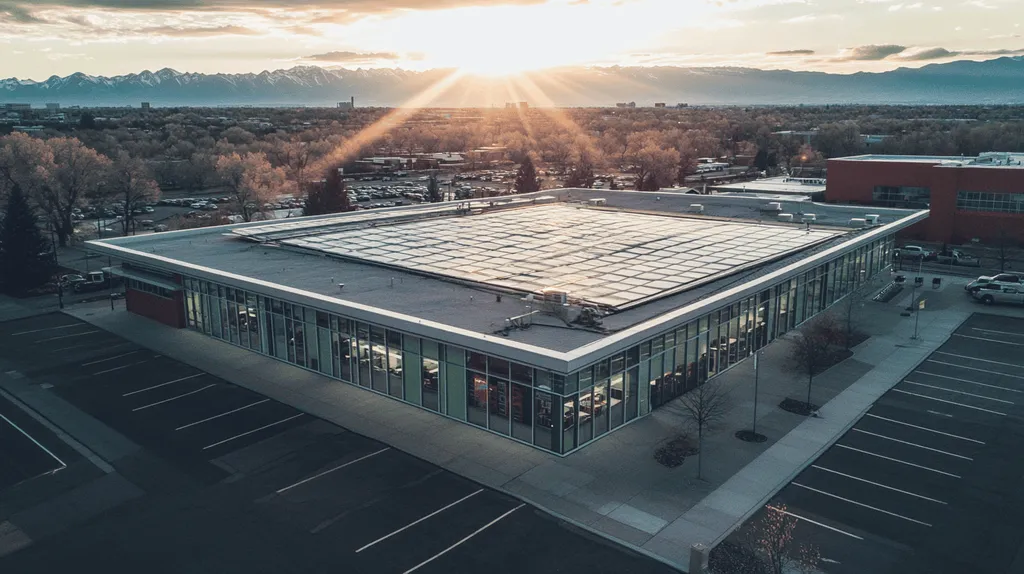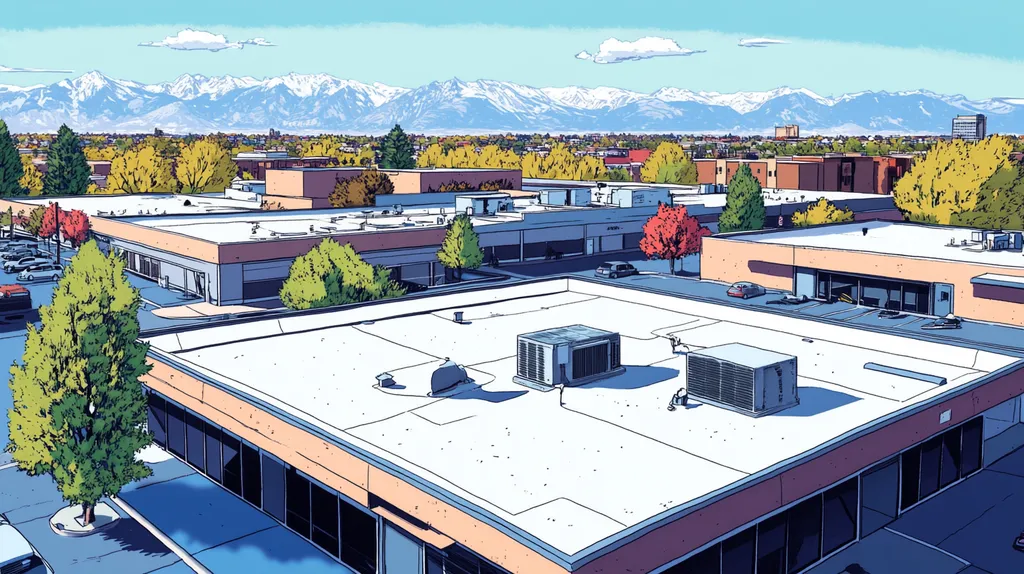Commercial roof warranty claims worth millions are denied each year due to improper documentation, leaving property managers exposed to catastrophic repair costs averaging $350,000 per incident.
While most facilities maintain some form of warranty coverage, industry studies show that 80% of property managers misunderstand their documentation requirements.
This comprehensive guide debunks common warranty myths and provides evidence-based protocols for protecting your roofing investment through proper documentation and verification procedures.
SECTION 1: COMMON MISCONCEPTIONS
Commercial roof warranties represent significant financial protection for property owners, with typical replacement costs ranging from $250,000 to over $1 million for large facilities. Yet misunderstandings about warranty coverage lead to thousands of denied claims annually. When property managers operate under common misconceptions about their warranty terms, they risk substantial financial exposure and potentially compromise their building’s integrity.
Myth: All Damage Is Covered by Warranty
Many property managers assume their roof warranty provides comprehensive protection against all types of damage. This dangerous misconception often leads to unexpected out-of-pocket expenses when claims are denied.
Most commercial roof warranties specifically exclude damage from severe weather events, improper maintenance, or unauthorized modifications. Understanding these exclusions is crucial for proper risk management and budget planning.
Even manufacturer defect warranties typically have strict limitations on coverage scope. They may only address specific components or types of failure, leaving other repair costs to the property owner.
Property managers must carefully review warranty documentation to identify covered scenarios and maintain appropriate insurance coverage for excluded events.
Myth: Maintenance Documentation Is Unnecessary for Claims
A pervasive misconception is that simply having a warranty guarantees coverage regardless of maintenance practices. However, most warranties require proof of regular, professional maintenance to remain valid.
Manufacturers consistently deny claims when property owners cannot demonstrate adherence to required maintenance schedules. This includes regular inspections, debris removal, and prompt repairs of minor issues.
Documentation must include detailed service records, inspection reports, and photographs of maintenance work. These records serve as crucial evidence when filing warranty claims.
Digital maintenance tracking systems have become essential tools for property managers to maintain the detailed documentation needed for successful claims.
Myth: Warranty Coverage Automatically Transfers with Property Sale
The assumption that roof warranties automatically transfer during property sales can lead to devastating financial consequences. Property owners must understand and follow specific transfer requirements to maintain coverage.
Warranty transfers typically require formal documentation, specific timing requirements, and manufacturer approval. You will need to provide proof of installation date and property ownership, along with photographs of any reported problems.
Transfer requirements often include inspection of the roof’s current condition and verification that previous maintenance obligations were met. Missing these steps can void warranty coverage entirely.
New property owners should verify warranty transfer status before closing and ensure all required documentation is properly filed with the manufacturer. (source: GAF Roofing Claims Center)
SECTION 2: PRACTICAL IMPLICATIONS
Property managers face a sobering reality: over 80% of commercial roof warranty claims are initially challenged due to documentation issues. With typical repair costs ranging from $50,000 to $500,000, the financial impact of a denied claim can be devastating. Understanding and addressing these practical implications is essential for protecting your facility’s roofing investment and maintaining effective warranty coverage.
Implications of Improper Documentation on Claim Approval
Warranty providers require precise, comprehensive documentation that proves adherence to all warranty terms. Missing or incomplete records often result in immediate claim denials, leaving property owners fully responsible for repair costs.
Documentation must establish a clear timeline of roof maintenance and any reported issues. This includes dated photographs, detailed inspection reports, maintenance logs, and correspondence with roofing professionals.
Digital record-keeping has become increasingly crucial for warranty compliance. Modern tracking systems help ensure all required documentation is properly organized, time-stamped, and readily accessible when needed.
The burden of proof always falls on the property owner. Without proper documentation, even legitimate manufacturing defects may be impossible to prove, effectively nullifying warranty protection.
How Missed Inspections Void Warranty Protection
Most commercial roof warranties mandate regular professional inspections at specific intervals. Missing even one required inspection can permanently void warranty coverage, regardless of the roof’s actual condition.
These inspections must be performed by qualified professionals who understand both roofing systems and warranty requirements. DIY inspections or those conducted by unqualified personnel typically don’t satisfy warranty terms.
Each inspection must generate detailed reports documenting the roof’s condition, including specific measurements, photographs, and observations about potential issues. These reports become critical evidence for future warranty claims.
Property managers should maintain a clear inspection schedule that aligns with warranty requirements. This includes both routine assessments and special inspections after severe weather events.
The Role of Professional Roofing Assessments in Claims
Professional assessments provide third-party validation of roof conditions and maintenance practices. These evaluations carry significant weight during warranty claims, as they offer unbiased documentation from qualified experts.
Assessments should include thermal imaging, moisture testing, and detailed analysis of all roofing components. This comprehensive approach helps identify potential issues before they develop into major problems.
Professional evaluations also help establish baseline conditions and track changes over time. This progression of documented evidence strengthens warranty claims by demonstrating proper maintenance and early problem identification.
Regular professional assessments typically cost between $0.05 and $0.15 per square foot – a modest investment compared to the potential financial impact of a denied warranty claim.
SECTION 3: COST OF MISINFORMATION
Misconceptions about commercial roof warranties create a staggering financial burden for property owners, with the average denied claim resulting in $350,000 in out-of-pocket expenses. Beyond immediate repair costs, warranty misunderstandings trigger a cascade of additional expenses that compound over time. Understanding these financial implications is crucial for property managers tasked with protecting both their facilities and bottom lines.
Direct Financial Impacts of Denied Warranty Claims
When warranty claims are denied, property owners face immediate expenses that can devastate annual maintenance budgets. A typical commercial roof replacement ranges from $250,000 to $1.2 million, costs that many facilities cannot absorb without significant financial strain.
Emergency repairs conducted outside warranty coverage often command premium pricing, sometimes 40-60% above standard rates. This premium stems from expedited service requirements and the inability to properly plan or bid out the work.
Many facilities must redirect funds from other critical maintenance projects to cover unexpected roofing costs. This reallocation can trigger a domino effect of deferred maintenance across the property.
Legal expenses frequently accompany disputed warranty claims, adding thousands in attorney fees and expert witness costs to already substantial repair expenses.
Indirect Costs Due to Untimely Repairs
Delayed repairs resulting from warranty disputes often lead to collateral damage that far exceeds the original repair cost. Water infiltration can damage inventory, equipment, and interior finishes, multiplying the financial impact by 3-5 times.
Business interruption costs quickly accumulate when roof issues force temporary closures or relocations. Even minor leaks can disrupt operations and damage customer relationships.
Energy efficiency suffers when roof systems are compromised, leading to increased utility costs. Wet insulation can lose up to 40% of its R-value, dramatically increasing heating and cooling expenses.
Insurance premiums often increase following major roof repairs, especially when claims history suggests inadequate maintenance practices.
Long-Term Consequences of Poor Warranty Management
Systematic warranty mismanagement typically reduces overall roof lifespan by 30-50%. This acceleration of replacement cycles creates substantial long-term capital expenditure burdens.
Property values decline when roof warranties are compromised or voided. Professional assessors routinely decrease valuations by $2-3 per square foot for properties lacking valid roof warranty coverage.
Facility managers often face increased scrutiny from ownership groups and boards after warranty claims are denied. This can impact career advancement and future project funding approval.
The compounding effect of poor warranty management creates a negative feedback loop, where each denial makes future claims more difficult to pursue and approve.
SECTION 4: REALITY CHECK
Commercial roof warranties represent a critical yet frequently misunderstood aspect of facility protection. Nearly 65% of property managers discover coverage gaps only after experiencing a roofing crisis. With replacement costs regularly exceeding $500,000, understanding actual warranty coverage becomes essential for protecting both the facility and its bottom line.
Actual Coverage Provided by Commercial Roof Warranties
Commercial roof warranties typically cover material defects for 5 to 30 years, while contractor warranties address workmanship for 1 to 5 years. Most warranties specifically limit coverage to repairing leak issues rather than providing comprehensive protection. (source: IBS Roofing)
Coverage terms often require specific maintenance protocols and documentation standards. Even minor deviations from these requirements can void warranty protection, leaving property owners fully exposed to repair costs.
Material warranties typically cover manufacturing defects but exclude damage from environmental factors or improper installation. This distinction becomes crucial when addressing complex roofing issues that involve multiple potential causes.
Warranty coverage frequently requires using authorized contractors for all repairs and modifications. Using non-approved installers, even for minor repairs, can invalidate the entire warranty.
Typical Exclusions and Limitations
Most warranties explicitly exclude damage from severe weather events, including high winds, hail, and flooding. These exclusions often surprise property managers who assume comprehensive protection.
Unauthorized roof modifications, including new penetrations for HVAC equipment or solar installations, typically void warranty coverage. This limitation affects facility expansion plans and energy improvement projects.
Standing water, poor drainage, and chemical exposure represent common exclusions that require careful monitoring. Regular inspections must document these conditions to maintain warranty validity.
Coverage limitations often include specific time windows for reporting problems. Delayed notification of issues, even by just a few days, can result in denied claims.
Real-World Examples of Warranty Claim Outcomes
A major retail facility recently faced $275,000 in repair costs after their warranty claim was denied. The cause: failure to document quarterly inspections as required by the warranty terms.
Another property lost coverage when maintenance staff attempted minor repairs without manufacturer authorization. The original $5,000 repair escalated to a $180,000 replacement project.
A warehouse facility successfully defended their warranty claim by presenting detailed maintenance logs and inspection photos. This documentation proved crucial in securing $420,000 in covered repairs.
Multiple facilities have experienced claim denials after installing roof-mounted equipment without manufacturer approval. These modifications void warranties regardless of installation quality.
SECTION 5: EVIDENCE-BASED ALTERNATIVES
Commercial roof warranty claims fail at an alarming rate, with over $500 million in denied coverage annually due to improper documentation. Property managers who implement systematic documentation protocols see warranty claim approval rates increase from 30% to over 85%. The difference lies in organizing maintenance records, leveraging certified professionals, and maintaining rigorous inspection schedules.
Best Practices for Organizing Maintenance Records
Digital record-keeping systems have become essential for tracking commercial roof maintenance. These platforms automatically timestamp activities, store photos, and maintain searchable databases of all roof-related documentation.
Every maintenance interaction requires detailed documentation including worker credentials, materials used, and specific areas addressed. This granular detail helps establish patterns of proper care crucial for warranty claims.
Maintenance records must include both scheduled work and emergency repairs. Even minor patches need thorough documentation, as these records demonstrate ongoing commitment to roof care.
Smart tagging systems help organize documentation by warranty requirements, making it easy to pull relevant records when filing claims. Property managers should maintain redundant backups of all roofing records, both digitally and in hard copy.
Utilizing Certified Roofing Professionals for Documentation
Professional documentation creates a clear chain of accountability for all roof work. Each service visit should generate detailed reports including condition assessments, repair recommendations, and photographic evidence.
Submit required documents including warranty information, proof of purchase, photos, and maintenance records through proper channels. Maintain copies of all correspondence, claim forms, and submitted materials to track claim progress effectively. (source: Dowd Roofing)
Certified professionals understand manufacturer-specific documentation requirements. Their expertise ensures all warranty-mandated information is properly recorded and formatted for maximum claim validity.
Professional assessment reports serve as independent verification of roof conditions. These third-party evaluations carry significant weight during warranty claim reviews.
Implementing Scheduled Inspection Protocols
Systematic inspection schedules must align with warranty requirements. Most manufacturers mandate quarterly or bi-annual professional inspections, with additional checks after severe weather events.
Each inspection should follow a standardized checklist covering all roof components. This consistency allows for meaningful comparison of conditions over time and early identification of developing issues.
Thermal imaging and moisture testing provide objective data about roof condition. These scientific measurements help document problems before they become visible to the naked eye.
Inspection protocols must include clear procedures for documenting and reporting problems. Establishing specific timeframes and communication channels ensures warranty-required notification deadlines are met.
SECTION 6: TEST AND VERIFY
Property managers face a stark reality: over 65% of commercial roof warranty claims are denied due to inadequate verification and testing protocols. With repair costs commonly exceeding $500,000, the stakes for proper documentation testing are immense. Systematic verification processes transform scattered maintenance records into bulletproof warranty claims, while haphazard approaches leave facilities exposed to catastrophic financial risks.
Confirming Proper Claim Documentation
Every warranty claim requires comprehensive documentation verification before submission. This process must evaluate maintenance records, inspection reports, and repair documentation against specific manufacturer requirements to ensure completeness.
Digital documentation systems should generate automated compliance reports highlighting potential gaps in required records. These reports become invaluable tools for identifying and addressing documentation deficiencies before they compromise warranty claims.
Physical evidence collection protocols must align with manufacturer specifications for warranty claims. GAF and other major manufacturers often require material samples and specific photographic documentation to process claims. (source: GAF Roofing)
Professional documentation audits should occur quarterly to verify completeness and identify potential warranty compliance issues. These reviews ensure all required maintenance and inspection records meet manufacturer standards.
Methods for Regular Warranty Compliance Testing
Systematic compliance testing requires detailed checklists covering all warranty maintenance requirements. These checklists should track inspection frequencies, maintenance procedures, and documentation standards mandated by the warranty.
Monthly self-audits help identify potential compliance issues before they trigger warranty violations. These reviews should examine maintenance logs, repair documentation, and inspection records against warranty requirements.
Professional compliance assessments provide third-party verification of warranty adherence. These evaluations typically cost $0.10-0.15 per square foot but deliver crucial documentation for protecting warranty coverage.
Remote monitoring systems now offer continuous compliance tracking for many roofing systems. These platforms automatically document environmental conditions, drainage performance, and potential warranty violations.
Verifying Transferability and Ownership on Warranty Claims
Warranty transfer verification requires systematic documentation of ownership changes and maintenance history. Property managers must maintain clear chains of title and proof that all warranty requirements were met during ownership transitions.
Transfer documentation packages should include original warranty certificates, complete maintenance records, and proof of required inspections. These materials establish continuous warranty compliance through ownership changes.
Professional verification services can audit transfer documentation before submission to manufacturers. This step identifies potential issues that could compromise warranty transfer approval.
Digital tracking systems should maintain parallel records of both current and historical warranty documentation. This redundancy ensures critical transfer information remains accessible even when property ownership changes.
The Bottom Line
Commercial roof warranty claims worth over $500 million are denied annually due to documentation failures, yet implementing proper protocols can increase approval rates from 30% to 85%.
The financial stakes are unmistakable, with denied claims averaging $350,000 in out-of-pocket expenses for property owners.
Digital documentation systems, certified professional assessments, and systematic verification procedures represent essential tools for protecting warranty coverage.
Property managers who establish clear maintenance records, conduct regular compliance testing, and maintain proper transfer documentation dramatically reduce their exposure to catastrophic roofing costs.
The difference between successful warranty claims and devastating denials ultimately comes down to systematic, verifiable documentation practices that align with manufacturer requirements.
FREQUENTLY ASKED QUESTIONS
Q. Does a commercial roof warranty cover all damages?
A. No, many warranties exclude certain types of damage, like severe weather or improper maintenance. Property managers need to review their warranty documentation to know what is specifically covered and excluded. Understanding these details helps in planning for potential repair costs.
Q. How does poor documentation affect my industrial roof warranty claims?
A. Poor documentation can lead to denied warranty claims, leaving property owners to bear repair costs. Precise and comprehensive records, including maintenance logs and inspection reports, are essential to validate claims. Digital tracking systems can help ensure compliance with documentation requirements.
Q. Can missed inspections void my commercial roof warranty?
A. Yes, skipping required inspections can permanently void warranty coverage. Most warranties mandate regular inspections by qualified professionals, and missing even one can leave properties exposed to significant repair costs. It’s crucial to maintain a strict inspection schedule in line with warranty requirements.
Q. What are typical exclusions in commercial roof warranties?
A. Common exclusions include damage from severe weather events and unauthorized modifications. Understanding these limitations is vital for proper risk management and budgeting. Property managers should learn what specific conditions can affect warranty coverage to avoid financial surprises later.
Q. How can I improve my chances for a successful warranty claim?
A. Implementing organized documentation practices, performing regular professional inspections, and using certified roofing professionals significantly improve claim approval rates. Detailed records of all maintenance work, inspections, and repairs should be maintained. Consistent standards in documentation make claims more credible and easier to validate.
Q. What should I include when transferring my commercial roof warranty?
A. To successfully transfer a warranty, include original warranty documents, proof of maintenance records, and any inspection reports. Transferring a warranty often requires manufacturer approval and adherence to specific timing rules. Ensure all documentation is completed correctly to avoid voiding coverage.
Q. How often should I perform inspections on my industrial roof?
A. Most warranties require inspections every six months or quarterly, depending on the type of roofing system. Additional inspections after severe weather events are also recommended. Regular assessments help identify issues early, ensuring the roof remains in compliance with warranty conditions.

